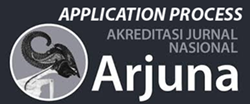Implementation of Critical Path Method (CPM) in Project Management of Type 45 House Construction in Samarinda
DOI:
https://doi.org/10.59653/jbmed.v3i02.1657Keywords:
Construction project, Project Management, CPM Method, Project efficiencyAbstract
Project management is a very important area to ensure that projects are successful, especially in terms of achieving their goals on time, within budget, and to the set quality. With a focus on planning, organizing, executing, and controlling projects, this study aims to examine how project management principles are applied in the implementation of construction projects in Indonesia. The method used was descriptive qualitative, and data were collected through literature research and documentation. The results showed that the understanding and application of project management methods such as Critical Path Method and cost and time control approaches have a great impact on project efficiency and efficiency. Therefore, it is highly recommended to improve management skills as well as the use of information technology in project management to improve overall project performance.
Downloads
References
Agus Marwan, Ganda Anderson, Tolu Tamalika, Deri Maryadi, & Mukminatun Ardaysi. (2024). Optimasi Waktu Pelaksanaan Pada Manajemen Proyek Pembangunan Gedung Poltekkes Jurusan Farmasi Tahap 1 Dengan Metode CPM Dan PERT. JIeTri : Journal of Industrial Engineering Tridinanti, 2(01), 21–26. https://doi.org/10.52333/jietri.v2i01.681
Ajeng Afifah Hendriputri. (2018). Percepatan Jadwal (crashing) Menggunakan Sistem Shift Dengan Analisis Pdm (precendence Diagramming Method). https://dspace.uii.ac.id/handle/123456789/5767
Badrin, S. (1997). Dasar-dasar Network Planing. Jakarta: PT Rika Cipta.
Chandra, F. D. (2023). Sistem Informasi Manajemen Proyek Pembangunan PT. Tuffindo Investama Con. Jurnal Teknologi Sistem Informasi, 4(1), 11–20. https://doi.org/10.35957/jtsi.v4i1.3150
Chasan, M. F., Fauji, D. A. S., & Purnomo, H. (2022). Evaluasi Penjadwalan Waktu Dan Biaya Dengan Metode CPM Dan Gantt Chart Pada Proyek Pembangunan Rumah Tipe 60/72 Griya Keraton Sambirejo Kediri. https://doi.org/10.29407/h35k9x73
Daud. (2024). Penerapan Manajemen Proyek dengan Metode CPM dan PERT pada Pembangunan Gedung Operasi RSUD Dr. H. Kumpulan Pane Kota Tebing Tinggi. Jurnal ARTI (Aplikasi Rancangan Teknik Industri), 19(2), 88–97. https://doi.org/10.52072/arti.v19i2.832
Fadila, N., Suliawati, S., & Arfah, M. (2024). Analisis Manajemen Proyek dengan Metode CPM (Critical Path Method) pada Pembagunan Rumah Subsidi di Perumahan Sultan Area City Kota Pinang. Factory Jurnal Industri, Manajemen dan Rekayasa Sistem Industri, 3(1), 9–19. https://doi.org/10.56211/factory.v3i1.616
Fazis, M. (2022). Perencanaan Proyek Dan Penjadwalan Proyek.
Hidayat, A., Roza Samsu Ismail, Taufik. (2020). Analisa Perhitungan Pekerjaan Reparasi Kapal Dengan Metode Critical Path Method (CPM). SPECTA Journal of Technology, 4(1), 84–91. https://doi.org/10.35718/specta.v4i1.172
Koilam. (2020). Perencanaan WaktuPenyelesaian Proyek Pembangunan Hotel Marron Resort Tomohon Dengan Menggunakan Precedence Diagram Method.
Lafaifa Wibawa Aisya Amalia Adam Alfino Ramadoni Muhammad Khoirul Huda Fakhrudin Alimi Ayu Lucy Larassaty. (n.d.). Implementasi Pengembangan Sumber Daya Manusia Dalam Upaya Meningkatkan Kompetensi Kinerja Karyawan Di PT. Jalur Nugraha Ekakurir Counter Agen Park Royal Sidoardji. https://doi.org/10.34308/eqien.v9i2.369
Maarif, M., Rosytha, A., & Kamandang, Z. (2022). Analisa Penjadwalan Proyek dengan Metode PERT dan CPM pada Pembangunan Gedung Hotel di Sidoarjo. 7: 648–54. https://doi.org/10.30651/ag.v7i1.9154.g4966.
Mar’aini, M. (2022). Penentuan Jalur Kritis untuk Manajemen Proyek (Studi Kasus Pembangunan Jalan Selensen-Kota Baru-Bagan Jaya). Jurnal Pustaka Manajemen (Pusat Akses Kajian Manajemen), 2(1), 6–13. https://doi.org/10.55382/jurnalpustakamanajemen.v2i1.184
Maulidi, A., Arifin, S., & Suyoso, H. (2021). Penjadwalan Proyek Konstruksi Menggunakan Critical Path Method (studi Kasus: Gedung Laboratorium Terpadu Fakultas Teknik Universitas Jember). Jurnal Ilmiah MITSU, 9(1), 1–8. https://doi.org/10.24929/ft.v9i1.992
Mewengkang, D. H., Sumanti, F. P. Y., & Malingkas, G. Y. (2023). Analisis Penjadwalan Proyek Menggunakan Metode PDM Dengan Menggunakan Konsep Cadangan Waktu Pada Proyek Pembangunan Rumah Susun Kejaksaan Tinggi Sulawesi Utara. 21(83). https://doi.org/10.35793/jts.v21i83.47042
Pangestu, N. F. (2021). Penerapan Metode Critical Parth Method (CPM) dalam Proyek Pembangunan Jembatan Alun-Alun Kota Kuningan. Journal Of Industrial And Manufacture Engineering, 5(2). https://doi.org/10.31289/jime.v5i2.4925
Perdana, M. A., & Sari, R. P. (2022). Optimalisasi Waktu Pelaksanaan Proyek Konstruksi Rumah Tinggal Menggunakan Metode CPM (Critical Path Method) dan PERT (Program Evaluation and Review Technique). Jurnal Media Teknik dan Sistem Industri, 6(2), 116. https://doi.org/10.35194/jmtsi.v6i2.1944
Pratasik, F., Malingkas, G. Y., Arsjad, T. T., & Tarore, H. (2013). Menganalisis Sensitivitas Keterlambatan Durasi Proyek Dengan Metode CPM. https://core.ac.uk/download/pdf/295327632.pdf
Prihandoko. (2022). Penerapan Metode Cpm Dan Pert Pada Pt. Xyz Dalam Pembangunan Proyek Apartemen Garden Di Tangerang. Banking and Management Review, 11(1), 1526–1542. https://doi.org/10.52250/bmr.v11i1.507
Rembulan, G. D. (2023). Penerapan Metode CPM dan PERT Pada Proyek Konstruksi Gereja Kemah Tabernake PIK 2 Jakarta Utara. Journal Of Industrial And Manufacture Engineering, 7(2), 147–160. https://doi.org/10.31289/jime.v7i2.9648
Rodhi, N. N. (2024). Perencanaan Manajemen Proyek Dalam Meningkatkan Efektifitas Kinerja Sumber Daya Manusia Di Bojonegoro. Dearsip : Journal of Architecture and Civil, 4(01), 25–32. https://doi.org/10.52166/dearsip.v4i01.6262
Rompis, A. O. M. (2019). Optimasi Waktu Proyek Dengan Penambahan Jam Kerja Menggunakan Precedence Diagram Method Pada Proyek Rehabilitasi Puskesmas Minanga.
Sa’adah. (2022). Evaluasi Proyek Pembangunan Gedung Stroke Center (Paviliun Flamboyan) Menggunakan Metode Critical Path Method (CPM) Dan Crashing. Publikasi Riset Orientasi Teknik Sipil (Proteksi), 3(2), 55–62. https://doi.org/10.26740/proteksi.v3n2.p55-62
Sa’adah, N., Iqrammah, E., & Rijanto, T. (2022). Evaluasi Proyek Pembangunan Gedung Stroke Center (Paviliun Flamboyan) Menggunakan Metode Critical Path Method (CPM) Dan Crashing. Publikasi Riset Orientasi Teknik Sipil (Proteksi), 3(2), 55–62. https://doi.org/10.26740/proteksi.v3n2.p55-62
Saputra, N., Handayani, E., & Dwiretnani, A. (2021). Analisa Penjadwalan Proyek dengan Metode Critical Path Method (CPM) Studi Kasus Pembangunan Gedung Rawat Inap RSUD Abdul Manap Kota Jambi. Jurnal Talenta Sipil, 4(1), 44. https://doi.org/10.33087/talentasipil.v4i1.48
Sinurat, F. (2024). Analisis Manajemen Proyek Dengan Metode Critical Path Method (CPM) Pada Proyek Pembangunan Gedung Chandra Tanjung Karang. Jurnal Konstruksi, 22(2), 98–107. https://doi.org/10.33364/konstruksi/v.22-2.2131
Soeharto, iman. (1999). Manajemen Proyek dan Konseptual sampai operasional. Jilid 1.
Sugiarta, T. (2022). Analisis Penjadwalan Proyek Remote Terminal Unit dengan Penerapan Metode CPM dan PERT di PT. XYZ. JIEMS (Journal of Industrial Engineering and Management Systems), 14(2). https://doi.org/10.30813/jiems.v14i2.2601
Surahman, Angga Kusumah, & Tomby, R. S. (2024). Project management planning of the small house construction in samarinda using the critical path method (CPM). 3. https://doi.org/(https://doi.org/10.35335/enrichment.v14i3.1939)
Syahputra, R., Pasaribu, M. F., & Syarif, A. A. (2024). Penerapan Metode CPM (Critical Path Method) Pada Proyek Peningkatan Sarana Dan Prasarana TPS Limbah dan Fasilitasnya Di PT. Putra Kuala Tanjung. IRA Jurnal Teknik Mesin dan Aplikasinya (IRAJTMA), 3(1), 31–37. https://doi.org/10.56862/irajtma.v3i1.90
Downloads
Published
How to Cite
Issue
Section
License
Copyright (c) 2025 Armini Ningsih, Surahman, Septi Ariani Aisyiah, Adelia Syahara, Achmad Bayhaqi

This work is licensed under a Creative Commons Attribution-ShareAlike 4.0 International License.
Authors who publish with this journal agree to the following terms:
- Authors retain copyright and grant the journal right of first publication with the work simultaneously licensed under a Creative Commons Attribution-ShareAlike that allows others to share the work with an acknowledgement of the work's authorship and initial publication in this journal.
- Authors are able to enter into separate, additional contractual arrangements for the non-exclusive distribution of the journal's published version of the work (e.g., post it to an institutional repository or publish it in a book), with an acknowledgement of its initial publication in this journal.
- Authors are permitted and encouraged to post their work online (e.g., in institutional repositories or on their website) prior to and during the submission process, as it can lead to productive exchanges, as well as earlier and greater citation of published work (See The Effect of Open Access).





























